People Are Bothered With How Animators Have Exaggerated Female Animal Characters
Most of us love watching animated movies and often end up binge-watching over a bowl of popcorn. We easily fall in love with their characters and would even reach the point of imitating them.
But have you noticed something in them, especially with the female animal characters? Sure you did but probably have set aside those as you focused on the entire story.
Movie watchers have noticed that animators have some ways of defining or distinguishing gender among animal characters. Viewers get to see the difference between the male and female animal characters.
While the males relatively look normal, the females, on the other hand, can be seen with their attractive curves, wide hips, pouty lips, wavy lashes, and their chest area showing a distinct bump.
Twitter user @slimyhipster has pointed out how these animators have sexualized the characters. In the real world, all animals look the same; and there is no other way to set a distinction in animation.
By following these animation standards, animators can set the female animal cartoon characters apart from the males. Interesting, isn't it?
Check out these photos to see what this user means and see examples of those animal characters from some of our favorite movies.
Male vs. female bird = normal vs. sexy bird.
 slimyhipster
slimyhipsterWomen cartoon characters are given exaggerated features like eyelashes and boobs.
 slimyhipster
slimyhipsterAs the thread has been brought to the forefront again, users were quick to give some examples.
 tmkeesey
tmkeeseyThe exaggeration of the exaggerated: a female chicken.
 polarisu
polarisuThis overly sexualized lady goose from Balto III: Wings of Change.
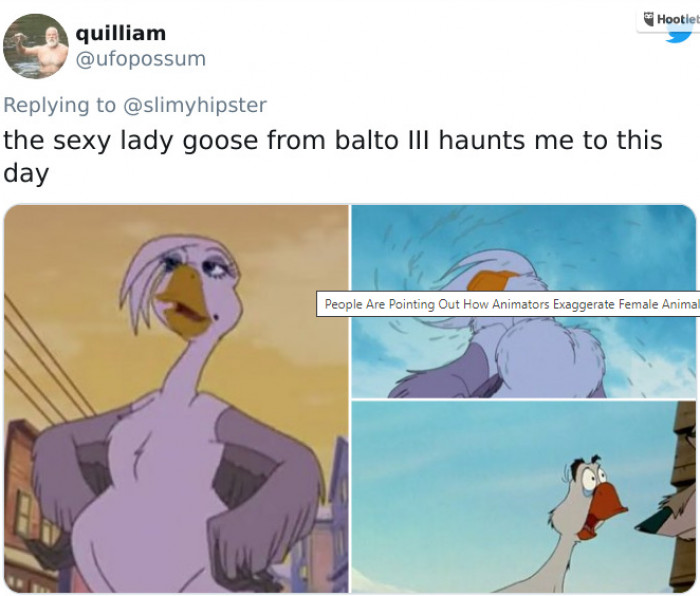 ufopossum
ufopossumHere come the male and female students of Seton Academy.
 angeloratac2002
angeloratac2002The most disturbing duck female character you've probably ever seen.
 dimentiorules
dimentiorules
Male and female deer from the movie Open Season.
 worm_rights
worm_rights
Even the movie, Ice Age, portrayed their female characters the same way others did.
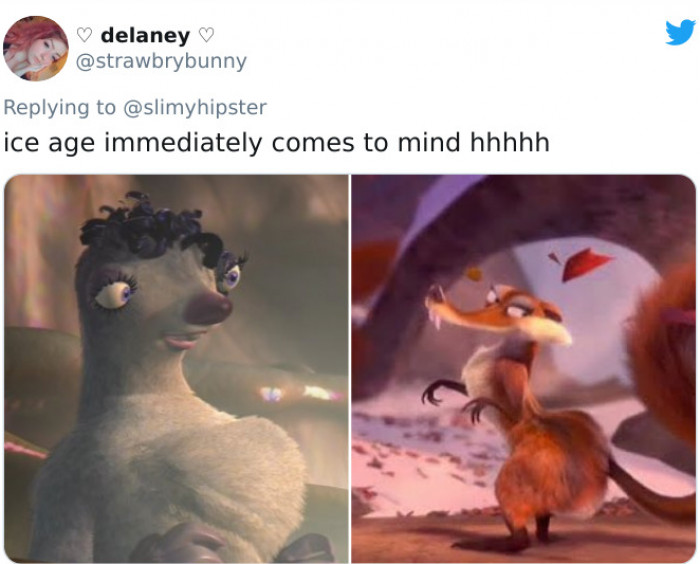 strawbrybunny
strawbrybunny
Here's Angelina Jolie’s character in Shark Tale.
 marrongum
marrongum
Lipstick at the end of this female toucan's beak, bedroom eyes, and boobs.
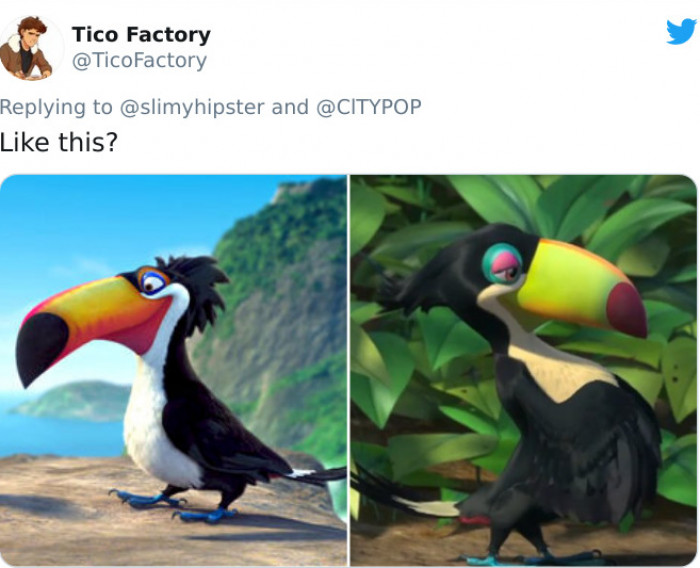 TicoFactory
TicoFactory
But Otis from the Barnyard has udders.
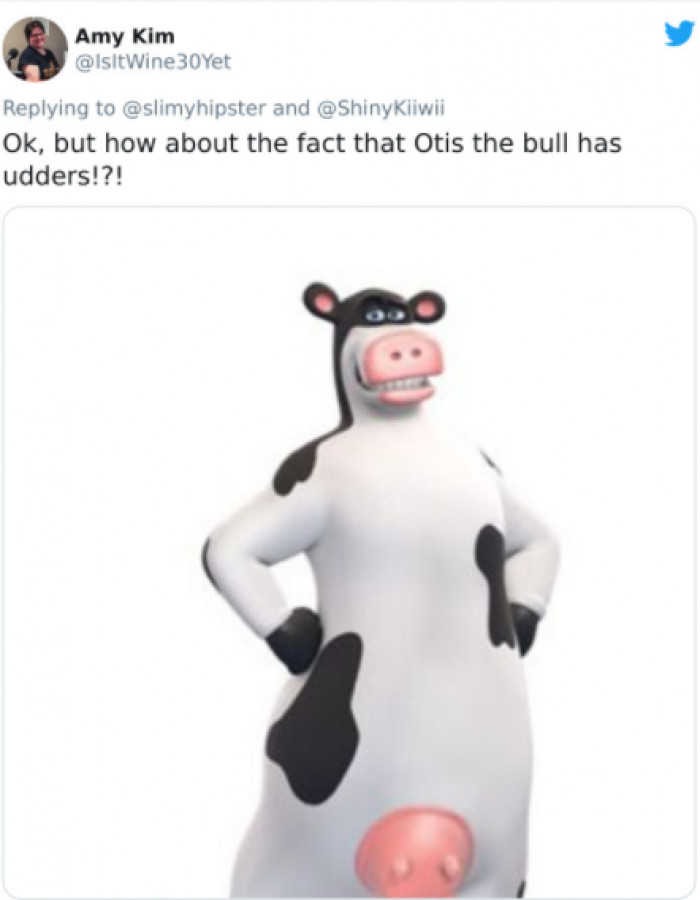 IsItWine30Yet
IsItWine30Yet
What about Angel from Lilo & Stitch?
 Beyond_Cake
Beyond_Cake
Henri vs. the lady pigeons from An American Tail.
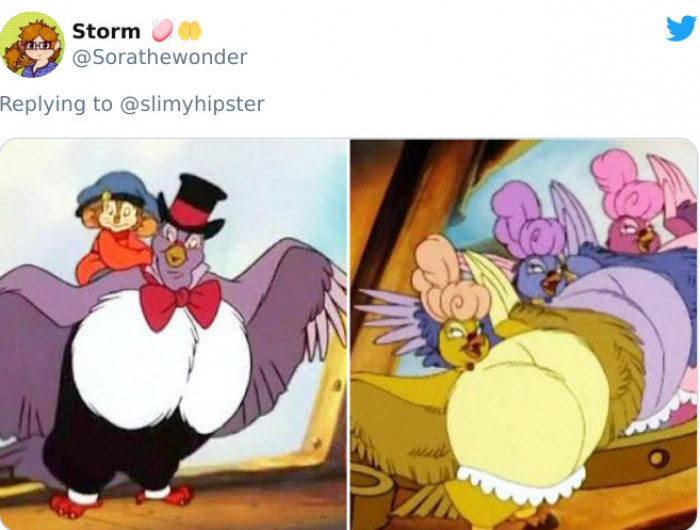 Sorathewonder
Sorathewonder
Pink beak part and boobs for Gloria from Happy Feet.
 jackaboi_art
jackaboi_art
Ellie vs. Peaches from Ice Age.
 GluffOfficial
GluffOfficial
Some find the female animated designs not problematic at all.
 RoonKolos
RoonKolos
One even wanted the female versions to be more colorful and prettier.
 LgTeknii
LgTeknii
Female bunnies have dewlaps except for the make-up.
 Pickledsuicune
Pickledsuicune
Perhaps these are the only non-exaggerated female cartoon characters.
 edenmist_
edenmist_
The geese from The Aristocats have colored hats in comparison.
 JinMegamiTensei
JinMegamiTensei
The male fish seemed to be balding in Finding Dory.
 LgTeknii
LgTeknii
Feminine features give viewers a visual signal.
 accioharo
accioharo
Kitty Softpaws' design was great in Puss in Boots.
 Miraread_tweets
Miraread_tweets
These characters from Kung Fu Panda are just normal.
 namseokuwu
namseokuwu
Tigress and Viper from Kung Fu Panda.
 sir_scandalous
sir_scandalous
Many have cracked jokes along the way.
 igmrevaporation
igmrevaporation
Equality is being portrayed here.
 Wolfie_2323
Wolfie_2323
These people are emphasizing mammals.
 tristanoscars
tristanoscars
Birds aren't even mammals.
 MiloZimbenMusic
MiloZimbenMusic
When studios plan out the male vs. female look.
 Neon_woof
Neon_woof
Masculine vs. feminine.
 Andrea60723281
Andrea60723281
This, though, is a greater sage-grouse.
 murderparrot997
murderparrot997
Talking about one's experience.
 LouarnRanger
LouarnRanger
If not for this user who pointed all these out, perhaps, many would not notice that female characters have been presented that way.
For decades over decades, we have accepted those cartoon characters. Never did we imagine them as too sexist.
There are many ways to present female versions of animal cartoon characters, which animators perhaps need to explore more. But there are rules and standards in animation that these people in the industry follow.
What about you? What's your take on this issue?
